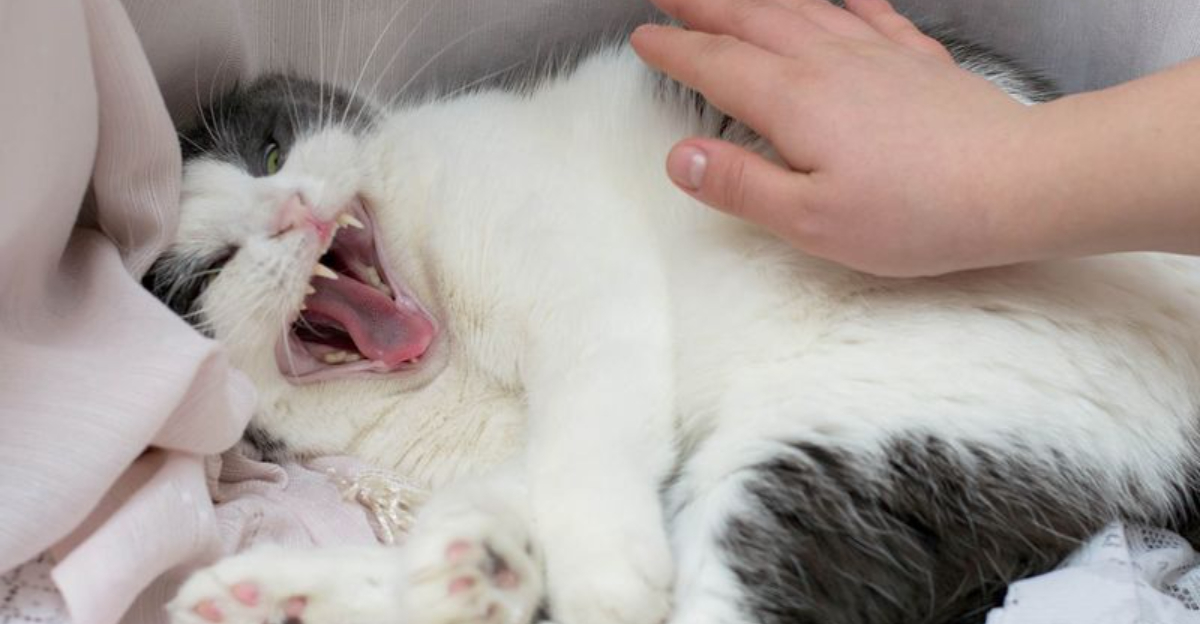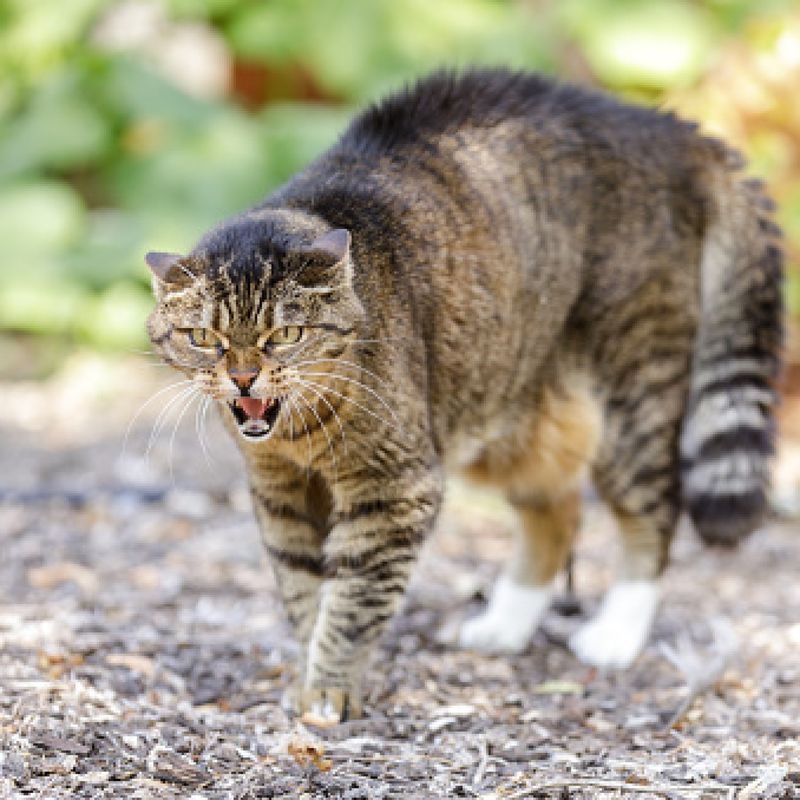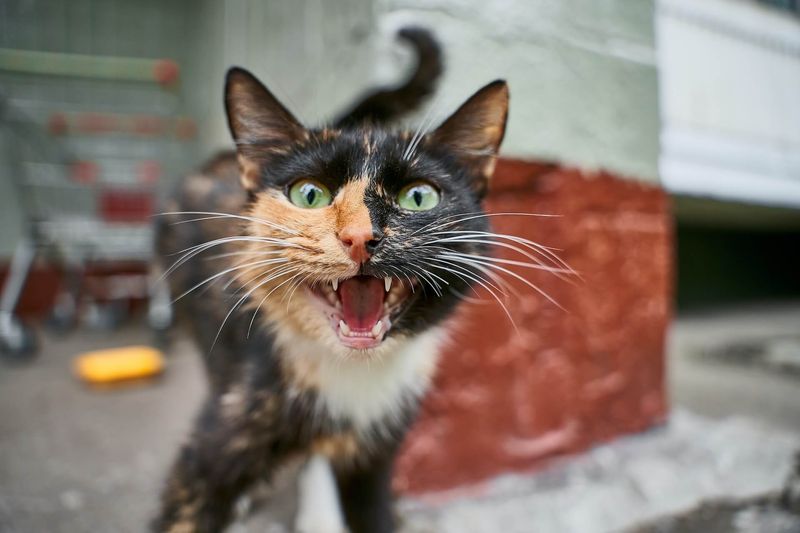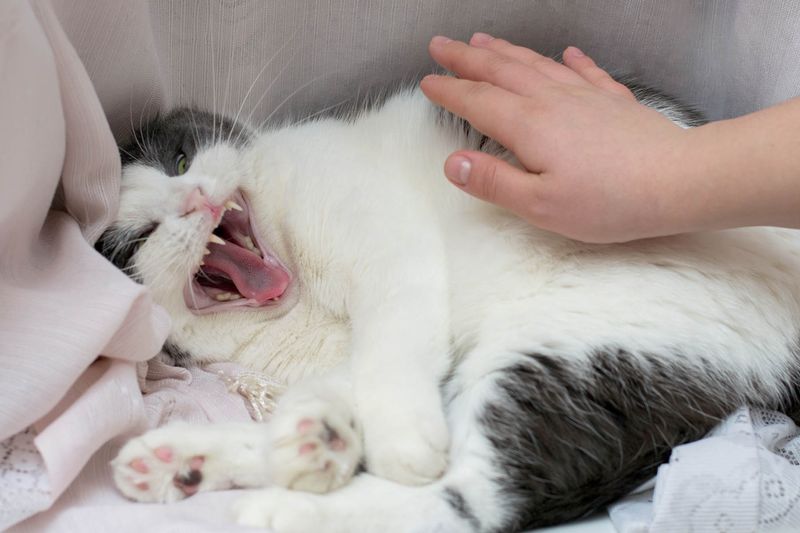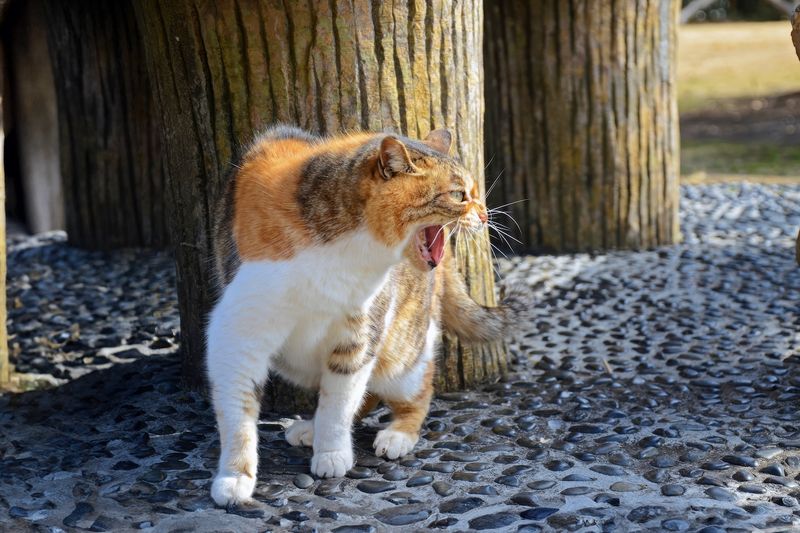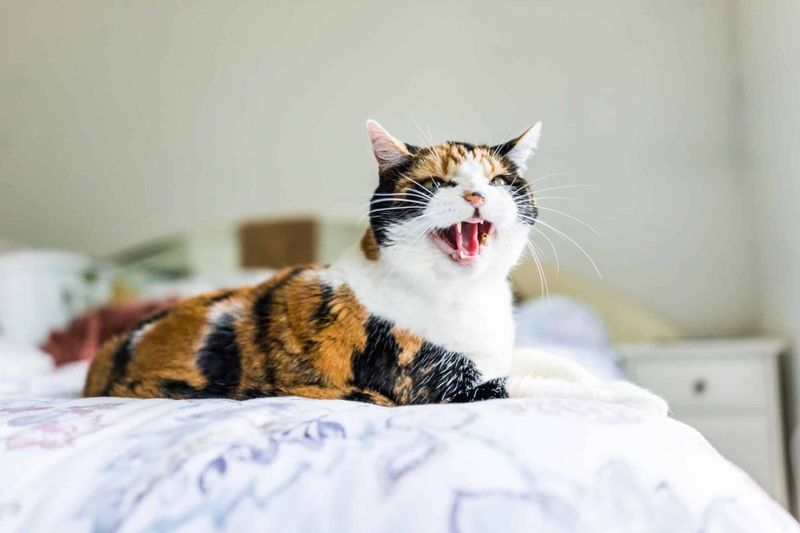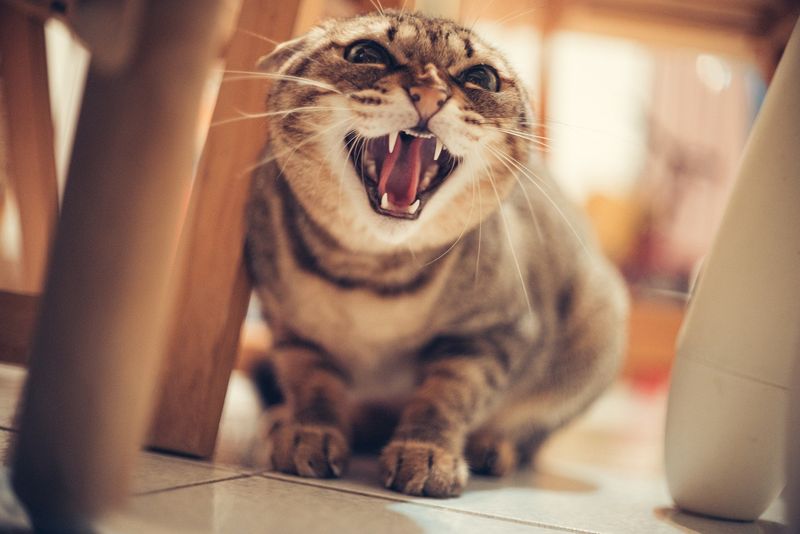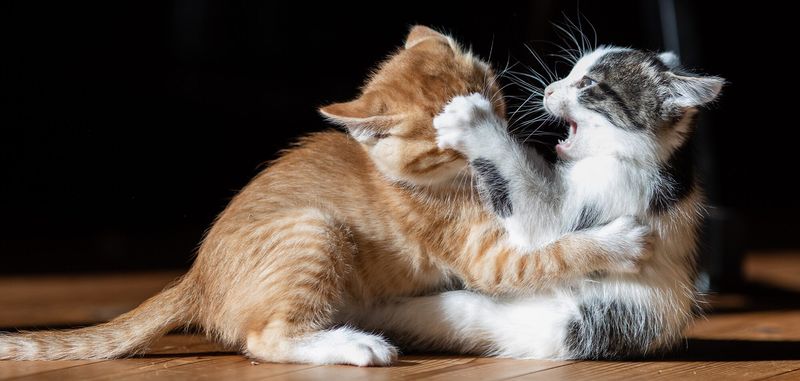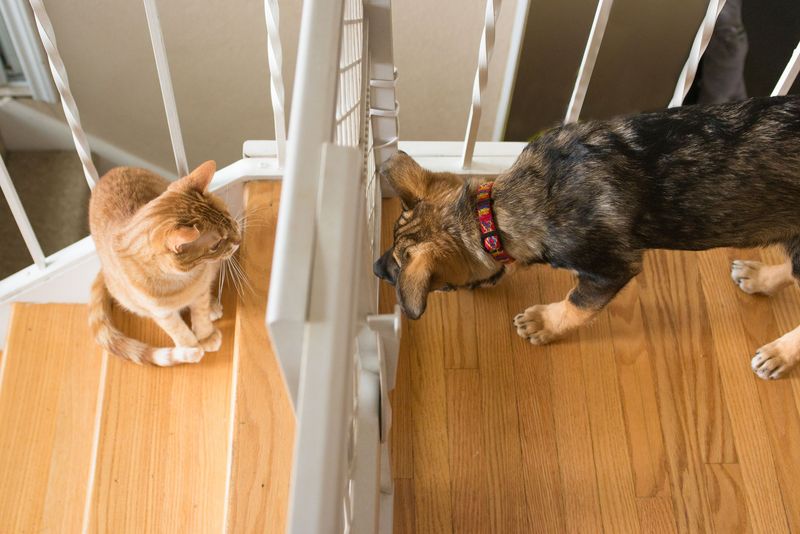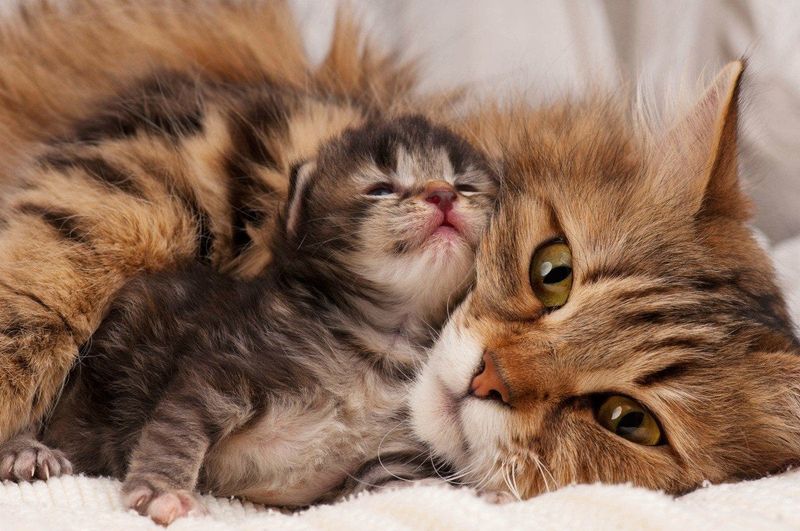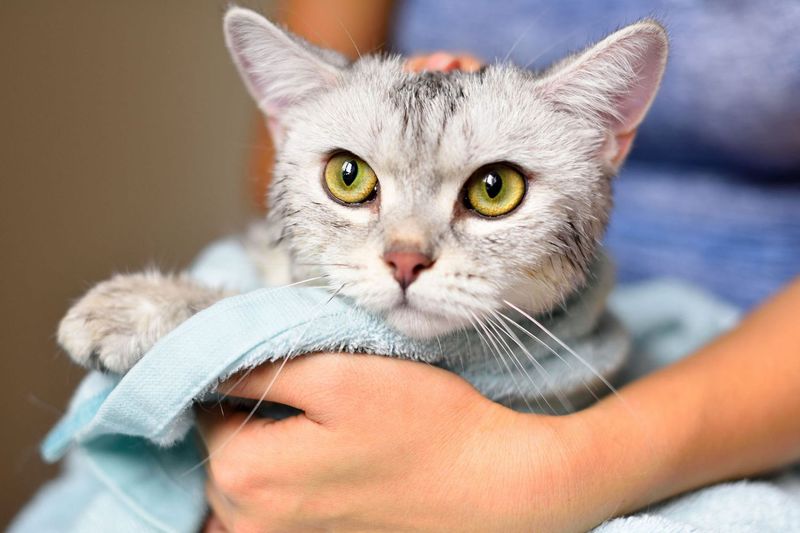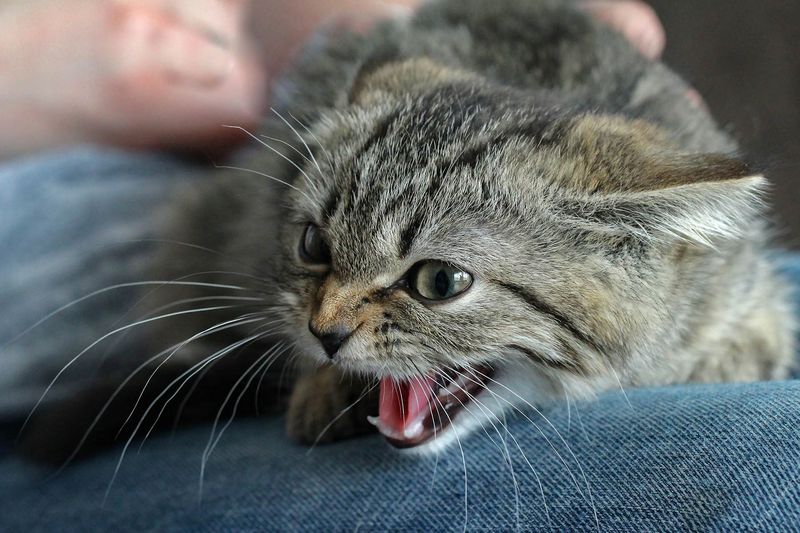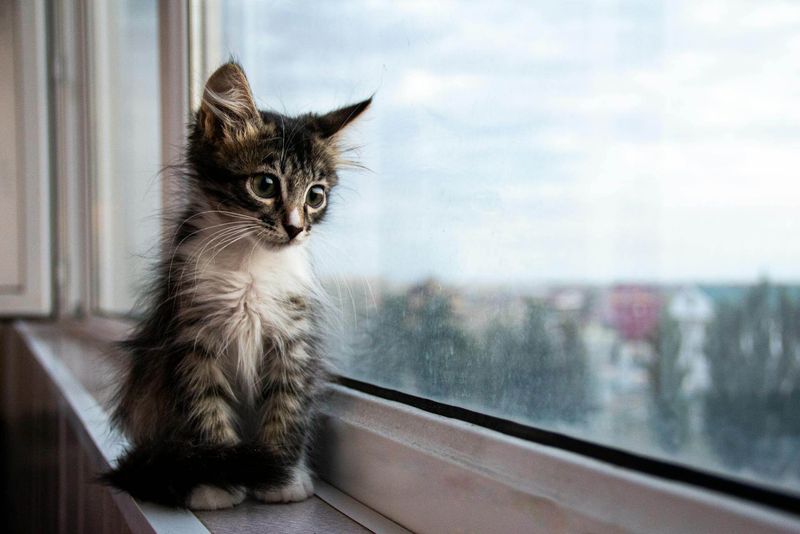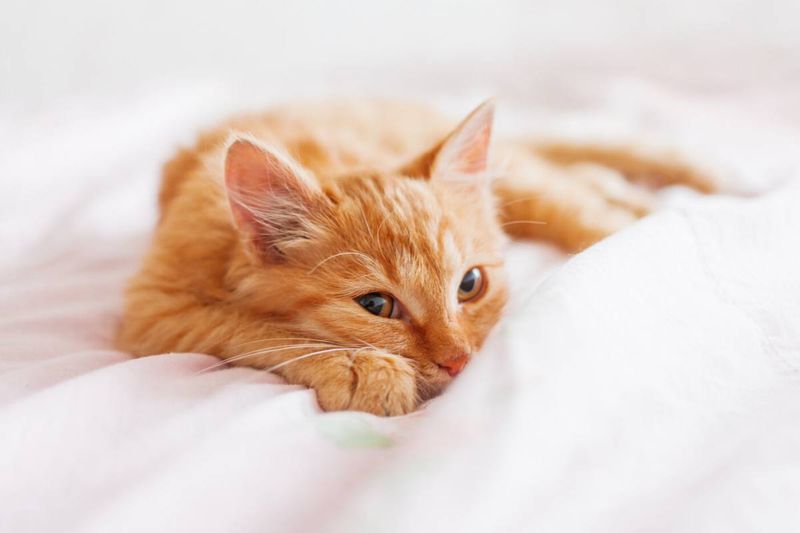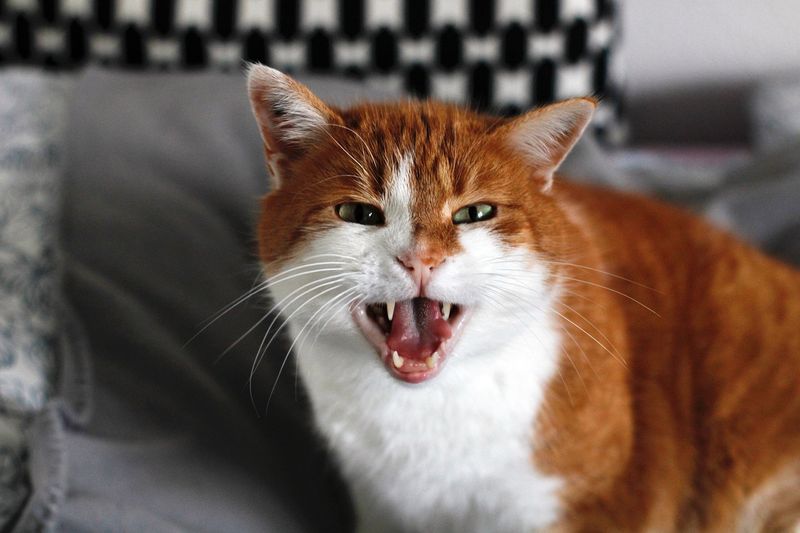📖 Table of Content:
- 1. Feeling Threatened
- 2. Fear or Anxiety
- 3. Pain or Discomfort
- 4. Territorial Instincts
- 5. Overstimulation
- 6. Redirected Aggression
- 7. Play Turned Too Rough
- 8. Defensive Response
- 9. Introduction to a New Pet
- 10. Protecting Kittens
- 11. Vet Visits (aka “The Betrayal”)
- 12. New Scents or Objects
- 13. Poor Socialization
- 14. Surprise Wake-Up Call
- 15. Just for Drama
The sudden burst of air, often accompanied by flattened ears, arched backs, and a puffed-up tail, can make any cat seem like a tiny, fire-breathing dragon. While it may seem like an overreaction to us, hissing is an important part of feline communication. It’s their way of saying, “Back off!” or “I’m not comfortable with this.” But what exactly causes a cat to unleash this dramatic sound, and what can we learn from it?
Hissing is a natural and instinctive response that helps cats protect themselves in uncertain or stressful situations. Unlike growling or meowing, which can have a range of meanings, a hiss is almost always a sign of distress, discomfort, or warning. It can happen when a cat feels threatened, is in pain, or is simply annoyed by too much attention. Understanding why a cat hisses can help owners respond appropriately—whether that means giving them space, identifying a health issue, or helping them adjust to a new environment. By recognizing the reasons behind hissing, cat owners can strengthen their bond with their feline friends and create a more harmonious home.
Although hissing may seem aggressive, it’s actually a cat’s way of avoiding a fight rather than starting one. In the wild, this warning signal helps prevent unnecessary confrontations by letting others know they are uncomfortable or afraid. Even in a domestic setting, a hissing cat is simply trying to communicate their boundaries. Whether they’re reacting to a new pet, an unfamiliar scent, or a painful condition, their dragon-like hiss is a valuable clue to what’s going on in their world. By paying attention to their body language and the context of the situation, cat owners can better understand and respect their pet’s needs.
1. Feeling Threatened
When a cat feels threatened, its instincts take over, and hissing becomes a natural defense mechanism. Sudden movements, unfamiliar people, or even an overly energetic dog can make a cat feel cornered. Instead of immediately attacking, the cat will issue a warning hiss to create distance. This reaction is common in multi-pet households where a new animal invades their personal space. A cat may also hiss at humans if they associate them with past negative experiences. Observing their body language, such as a tense posture or dilated pupils, can help identify when they feel threatened. Giving them space and a safe environment can prevent escalation into aggression.
2. Fear or Anxiety
Fear often triggers a hiss when a cat is startled or placed in an uncomfortable situation. Loud noises, like vacuum cleaners or fireworks, can send a cat into defensive mode. If a cat is unfamiliar with an object, such as a new piece of furniture, they may react with caution and a warning hiss. Anxiety-driven hissing can also occur when a cat is exposed to new environments, such as moving to a new home. Social anxiety is another factor, especially in cats that haven’t been well-socialized with humans or other animals. It’s important to provide reassurance by speaking softly and allowing them to observe from a safe distance. Over time, patience and positive reinforcement can help reduce fearful hissing episodes.
3. Pain or Discomfort
Pain can turn even the sweetest cat into a hissing machine, signaling distress when touched or moved. If a normally friendly cat suddenly starts hissing when being handled, it might be a sign of an injury or underlying medical issue. Arthritis, dental pain, or even digestive problems can make everyday activities uncomfortable, causing them to lash out defensively. A cat experiencing pain might also avoid jumping, grooming, or playing as usual. Since they are experts at hiding discomfort, hissing can be one of the few visible signs of a problem. Observing changes in behavior, eating habits, or movement can help detect health concerns early. A trip to the vet is always a good idea if hissing becomes frequent and unexplained.
4. Territorial Instincts
Territory is sacred to cats, and they aren’t shy about defending it with a fierce hiss. When another animal enters their space, a cat may react aggressively to establish dominance. Even in a home with no other pets, a cat may hiss at a visiting friend or family member they don’t recognize. This behavior is deeply rooted in their wild ancestry, where survival depended on protecting resources. Scent plays a huge role in territorial disputes, and unfamiliar smells can make a cat uneasy. Providing separate areas, litter boxes, and feeding stations for multiple cats can help reduce territorial hissing. With time and proper introductions, even the most possessive felines can learn to coexist peacefully.
5. Overstimulation
Too much of a good thing can quickly lead to a hiss, especially when it comes to petting. Some cats enjoy affection in small doses, but when they’ve had enough, they use hissing as a warning to stop. Overstimulation occurs when repetitive touch, such as stroking along the back, becomes irritating rather than enjoyable. The shift from contentment to irritation can happen suddenly, leaving an unsuspecting owner confused. Signs like tail flicking, skin twitching, or ear flattening usually precede a hiss. Paying attention to these signals can help prevent unwanted reactions. Respecting their tolerance levels ensures that petting remains a pleasant experience for both the cat and the owner.
6. Redirected Aggression
Sometimes, a cat will hiss at someone or something that isn’t the real cause of their frustration. If a cat sees an outdoor cat through a window but can’t chase them away, they may turn their aggression toward another pet or human nearby. This misdirected frustration can result in a sudden hiss, swat, or even a full-blown attack. A similar reaction can happen if they are interrupted while focusing on prey, like a bird outside. Cats experiencing redirected aggression may need time to cool off in a quiet, separate area. Avoid handling an agitated cat directly, as this can escalate the situation. Recognizing the root cause can help owners manage and prevent these stress-induced outbursts.
7. Play Turned Too Rough
Excitement can sometimes get the best of a cat, leading to an unexpected hiss during playtime. Kittens and young cats, in particular, engage in rough play to develop hunting and social skills. If play gets too intense, a cat may hiss as a way of saying, “That’s enough!” This is especially common in multi-cat households, where wrestling matches can escalate quickly. A hiss in this context isn’t necessarily aggressive but serves as a way to reset the interaction. Watching for signs of overstimulation can help ensure that play remains fun and non-threatening. If necessary, redirect their energy with toys rather than hands to prevent accidental scratches or bites.
8. Defensive Response
Being cornered with no escape route can cause a cat to react with a defensive hiss. Unlike aggressive behavior, which is meant to intimidate, defensive hissing is about self-preservation. A trapped cat will hiss as a last-ditch attempt to warn off potential threats. This often happens during vet visits, when being handled against their will, or when encountering an unfamiliar pet. Giving them an escape route can help reduce their stress and prevent escalation. Cats need to feel in control of their surroundings to remain calm. Ensuring they have hiding spots and safe zones at home can prevent defensive hissing altogether.
9. Introduction to a New Pet
Bringing a new pet into the home can disrupt the balance and trigger territorial hissing. Cats are creatures of habit, and sudden changes to their environment can make them feel uneasy. Initial meetings should be done gradually to avoid unnecessary stress or conflict. Hissing in this situation is a natural way for a cat to establish boundaries with the newcomer. Proper introductions, scent swapping, and slow interactions can help ease tension. Rushing the process can lead to prolonged hostility and anxiety. Given enough time, most cats will eventually adjust to their new furry roommate.
10. Protecting Kittens
Mother cats take no chances when it comes to the safety of their kittens. Even the most affectionate cat may become fiercely protective, hissing at anyone who gets too close. This behavior is instinctual and ensures that the litter remains undisturbed. A new mother may even hiss at familiar humans if she feels her babies are at risk. Giving her space and allowing her to feel secure can help reduce defensive hissing. As the kittens grow and become more independent, this behavior usually fades. Respecting a mother cat’s boundaries is key to maintaining trust during this period.
11. Vet Visits (aka “The Betrayal”)
Trips to the vet are a common cause of hissing, as they often involve strange smells, poking, and prodding. Even the most well-behaved cat may hiss when restrained or examined. The stress of being in an unfamiliar place surrounded by other animals can heighten their anxiety. Bringing a blanket or toy with familiar scents can provide some comfort. Using a calm voice and slow movements can also help keep them relaxed. Some vets use pheromone sprays or treats to make the experience less intimidating. While hissing at the vet is normal, positive reinforcement can make future visits easier.
12. New Scents or Objects
Unfamiliar smells or objects can cause a cat to react with suspicion and a defensive hiss. Something as simple as a new air freshener, a package, or freshly washed laundry can make them uneasy. Cats rely heavily on their sense of smell to navigate their environment, so sudden changes can feel intrusive. Introducing new objects gradually and allowing them to investigate on their terms can ease their anxiety. If a cat hisses at a new item, leaving it in a familiar space can help them adjust. Over time, curiosity usually wins over caution. Patience is key when dealing with a cat’s sensitivity to change.
13. Poor Socialization
Lack of early socialization can make a cat more prone to hissing, especially around humans or other animals. Cats that weren’t exposed to different people, sounds, or environments as kittens often grow up more fearful and reactive. A poorly socialized cat may hiss when approached, touched, or even just looked at. This defensive behavior stems from uncertainty and a lack of trust rather than true aggression. Helping a cat overcome this requires patience, gentle interactions, and positive reinforcement. Gradually introducing them to new experiences can build confidence over time. While some cats may never become overly social, they can still learn to feel safe and comfortable in their home.
14. Surprise Wake-Up Call
Startling a sleeping cat is a surefire way to hear an irritated hiss. Cats, like humans, don’t appreciate being woken up unexpectedly—especially if they were in a deep sleep. A groggy, confused cat may react instinctively with a hiss before realizing there’s no actual threat. This is especially common in older cats or those with hearing loss, as they may be more easily startled. It’s best to wake a cat gently by calling their name or softly tapping a nearby surface. Respecting their rest time helps prevent unnecessary stress and keeps interactions positive. After all, a well-rested cat is a happy cat!
15. Just for Drama
Some cats are simply dramatic by nature, and hissing is just another tool in their theatrical performance. Certain breeds, like Siamese or Bengals, are more vocal and expressive, using hissing to exaggerate their emotions. A cat may hiss just to make a point—whether it’s about being picked up against their will, being ignored for too long, or simply because they’re feeling sassy. This type of hissing is often more bark than bite, with no real threat behind it. Owners who recognize their cat’s flair for drama can usually tell when it’s just an act. Knowing the difference between serious hissing and a dramatic display makes it easier to handle their moods.
